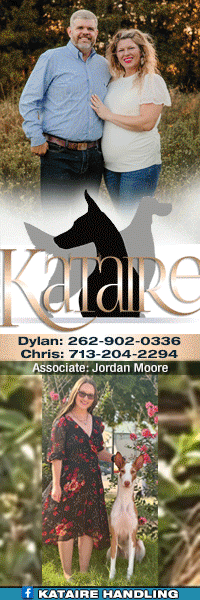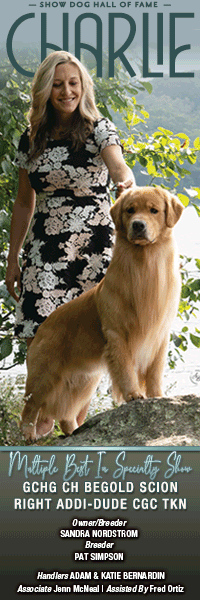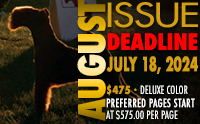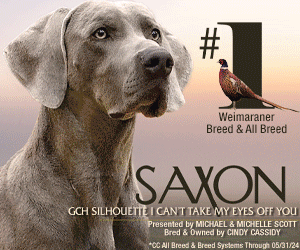Augustus Elliot Fuller the Sussex Spaniel
Text and Illustrations by Ria Hörter
Augustus Elliot (also Eliot, Elliott and Eliott) Fuller (1777-1857) was an extremely rich British landowner who lived in Sussex, Wales and London, and owned property in Jamaica. Around 1795 he began to develop a line of working spaniels, bred for hunting in the heavy cover and clay soil of his area – heavily built dogs for a heavy job.
Business with Pleasure
The Fuller Family had its roots in Uckfield en Waldron (east Sussex). In 1776, John Trayton married Anne Elliot (1754-1835), daughter of George Augustus Elliot (1st Baron Heathfield) and Anne Pollexon Drake. Their oldest son, Augustus Elliott, was born on May 7th, 1777, and the young family settled in Brayley Park, later renamed Heathfield Park. When he was 14, the family moved to Ashdown House in East Grinsted. Augustus and his 5 brothers and 6 sisters were raised as members of the privileged class of aristocratic, well-to-do 18th- and 19th-century families that combined business with pleasure, where pleasure meant hunting with dogs.
Setting, Cocking, Springing and Water
Spaniels existed in England long before Augustus Fuller was born: setting spaniels for net hunting, cocking spaniels for hunting woodcock, springing spaniels for springing the game, and water spaniels for retrieving waterfowl. At that time, spaniels were a mixture of types, colors and sizes; however, they shared one thing: their centuries-old history.
The word ‘spaniel’ (spanyel, spanyelles) is written in old laws of Ireland and Wales, in the 14th–century Canterbury Tales and in books from the 15th century. The 14th-century French count Gaston III de Foix (called Phoebus) and Dr. Iohannes Caius (16th century) mentioned spaniels in their books. Dog writers in the following centuries described spaniels as ‘medium sized, round bodies, long ears and dark eyes’.
Type or Bloodline
An illustration in Sydenham Edwards’ Cynographia Brittannica (1799-1805) shows four Spaniels colored liver and white, black and white, sandy liver, and lemon and white. Edwards wrote: ‘…the land spaniel may be divided into two kinds, the Springing, Hawking Spaniel or Starter and the Cocking or Cocker Spaniel.’ Shortly after Fuller began breeding his spaniels, several dog writers mentioned his dogs in their books.
In The Sportsman’s Repository (1820), John Scott wrote about the colours of the various spaniels: ‘yellow, liver colored, red, brown, white and black-and-tan with tan on the legs and the muzzle.’
In Gen. Hutchinson’s Dog Breaking (1856) we read: ‘One of the fine yeoman of whom England had such cause to feel proud was shooting with an old, short-legged, strong loined Sussex Spaniel.’ And two years after Fuller’s death, Stonehenge (J.H. Walsh) wrote in The Field in 1859: ‘The Sussex differs from the Clumber in shape as well as in his ‘questing’, his note being full and bell-like, though sharp. The whole body is also of a decided liver colour, but with rather a golden shade, not so deep as that of the Welsh or Devon Cockers or the Irish Water Spaniel.’
Stonehenge was the first writer to mention Augustus Fuller as the breeder of ‘George’ and ‘Romp’, depicted in 1859.
Although there was not yet a national stud book, many breeders – especially those with their own type or bloodline – kept pedigrees and studbooks in which they recorded of matings, the colors of the dogs, litters, and sometimes the purchased and sold dogs. In the 18th and 19th centuries, inbreeding and strong line breeding over several generations was not uncommon. A brother/sister or father/daughter mating was the shortest way to set the desired type. Breeders also commissioned painters of their dogs. Unfortunately, only one drawing of two of Augustus Fuller’s spaniels has survived the centuries.
Wales
Augustus Fuller’s father-in-law, Owen Putland Meyrick, was born in Anglesey (Wales) into a family with history dating back to before Roman times. In 1801, the Meyrick family lived at Bodorgan Estate in Llangadwaladr. When his father-in-law died in 1824, Augustus’ oldest son, Owen John Augustus, inherited Bodorgan Estate and moved to Wales.
Augustus and Clara traveled frequently to Wales, where Owen had kennels built ‘to house several packs of hounds for his father to hunt.’ It’s known from several sources that Augustus was a passionate hunter of hare.
The Rose Hill Connection
A distant and unmarried family member named Rose Fuller died in the same year Augustus was born (1777). For 22 years, Rose Fuller (the name suggests a woman, but Rose was a man) was squire of Rose Hill (later spelled as Rosehill), situated close to the village of Brightling in Sussex. After his death in 1777, his properties were inherited by his nephew John Fuller, known as ‘Mad Jack’. When ‘Mad Jack’ died in 1834, Rose Hill was inherited by another nephew, Augustus Elliot Fuller.
By that time, Augustus was an immensely rich man. In 1811 he inherited Ashdown House from his father, and in 1834 Rose Hill, Waldron Estate and Bodiam Castle (then already a ruin) from ‘Mad Jack’. Augustus also owned the estates Catsfield and Hooe, a house in London and Rose Fuller’s ‘sugar works, lands and hereditaments in the island of Jamaica’.
De Spaniels of Rose Hill
We know a lot about Augustus Fuller and his family, but not much about the spaniels he bred at Rose Hill. When Fuller began breeding around 1795, it is assumed that his spaniels had long backs and shorter legs than the usual cocking or springing spaniels. His dogs’ coats were thick, dense, glossy and waterproof. Contemporaries swore by a liver-colored coat of a ‘golden shade’, with or without white markings.
Augustus Fuller bred heavy spaniels able to hunt in the heavy cover and clay soil in Sussex, and we can take it for granted that he bred dogs for his own use, although he might have sold or swapped a dog with other landowners now and then. Unfortunately, at some point the Rose Hill kennel was struck by an illness described as ‘dumb madness’.
Recognition
We read in The Sportsman’s Cabinet’ (published in 1803, about eight years after Fuller began breeding): ‘… the largest and strongest are common in most parts of Sussex and are called Sussex Spaniels.’
In 1845, Youatt wrote in The Dog under the heading ‘The Springer’ (‘A general term for all Spaniel breeds that sprung the game, such as the Norfolk, Clumber and Sussex, and not to be confused with the modern springer breeds.’ (Peggy Grayson, ‘The Sussex Spaniel’): ‘This dog is slower to range than the cocker, but it is a much safer dog for the shooter and can better stand a hard day’s work. The largest and best breed of Springers is said to be in Sussex, and is much esteemed in the wealds of that county.’
The first dog shows were organized in the mid-19th century. Sussex Spaniels were entered in the first Kennel Club stud book (covering registrations from 1859-74) under the heading ‘Spaniels (Field, Sussex, Cocker)”.
Fuller’s Inheritance
Fuller was not only a rich landowner but – according to tradition in aristocratic families – a Member of Parliament for Sussex from 1841-57.
After a marriage of nearly 55 years, his wife, Clara, died in their London house on Clifford Street. Fuller died a year later, on August 5, 1857. In his inheritance were 10 Beagles, 3 Pointers, 2 Retrievers and 6 Spaniels, described as ‘Fuller’s strain from Rose Hill’. The small number of spaniels could have been caused by disease in his kennel. The kennels were auctioned in 1857, the year of Fuller’s death. His kennel manager and gamekeeper, Albert Relf, asked for a male and female. It is said that he got ‘George’ and ‘Romp’. In his Modern Dogs (1893), Rawdon B. Lee enthusiastically told the story of ‘George’ and ‘Romp’, but others have their doubts and even question the existence of Albert Relf. The fact is that ‘George’ and ‘Romp’ were depicted in Stonehenge’s book The Dog, published in 1859, two years after Fuller’s death. The dogs then belonged to ‘E. Soames, Esq. of London’.
In 1879 (20 years after his death), Augustus Fuller was mentioned in Idstone’s publication: ‘Mr. Fuller was a celebrated breeder.’ However, the greatest compliment was from Rawdon B. Lee, in 1893: ‘He was a good sportsman of the old school.’
Large Spaniels
What happened to the spaniels Augustus Fuller bred? Did some go to Wales? Perhaps some went to his children. At Bordogan, there is a grave with an oval stone inscribed: ‘Trim. A favourite spaniel of Lucy Anne Fuller. Died May, 7th 1840 aged 17 years’. Lucy Ann was Augustus’ daughter, and Trim might have been one of the Rose Hill spaniels. Fuller’s oldest son, Owen John Augustus, is mentioned in the 1876 Kennel Club stud book: ‘Rag, bred by Mr. O.J.A. Fuller Meyrick of Brightling, Sussex’.
The influence of the old Field Spaniels on the Sussex Spaniel was substantial as demonstrated of Phineas Bullock who in the 1870s entered a Sussex Spaniel at a show in Staffordshire. The dog – by change named ‘George’ – was described by Idstone as a ‘typical Sussex Spaniel’. In 1874, ‘George’ appeared again at a show and Vero Shaw (author of The Illustrated Book of the Dog) complained to the organization that ‘George’s sire and dam were both black (Field?) spaniels. The complaint was unsustainable and in 1875, ‘George’ appeared again, in Birmingham, under the same judges, but this time not as a Sussex Spaniel, and there was not the slightest obstacle.
At the beginning of the 20th century, spaniels were shown as Sussex Spaniels even when they had one or two black parents. There were not always separate classes for Sussex Spaniels and the breed was entered as ‘Spaniels other than Clumbers’ or simply as ‘Large Spaniels’.
Of Pure Rosehill Blood
By the 1870s, Sussex Spaniels were facing extinction, despite crossings with Field Spaniels, ‘cocking Spaniels’ and even Water Spaniels. Vero Shaw wrote that purebred Rose Hill spaniels were rare, and if anyone owned one it was proudly mentioned, as in: ‘Buckingham and Maud of pure Rosehill blood.’
The name ‘Rose Hill’ became a source of confusion when Campbell Newington ‘adopted’ the prefix Rosehill. In 1989, Peggy Grayson wrote that Mr. Fuller’s working spaniels were known simply as ‘… Fuller’s strain of Rosehill.’ For over a century, two bloodlines named ‘Rosehill’ confused writers and readers.’ Whether or not Newington owned spaniels with ‘pure Rosehill blood’ is still the question.
Augustus Fuller may not have been the creator of the Sussex Spaniel, but he was certainly the one who set the type and developed the breed we recognize today.
The Sussex Spaniel Association (www.sussexspaniels .org.uk) was founded in 1924. Despite all efforts, the Sussex Spaniel is still a numerically small breed – only 60 were registered in the U.K. in 2009 – with about a thousand dogs worldwide. In 2004, the Sussex Spaniel was identified by the Kennel Club as a Vulnerable Native Breed. In 2009, Sussex Spaniel Clussexs Three D Grinchy Glee won Best in Show at Westminster Kennel Club Dog Show.
Short URL: http://caninechronicle.com/?p=1948
Comments are closed












